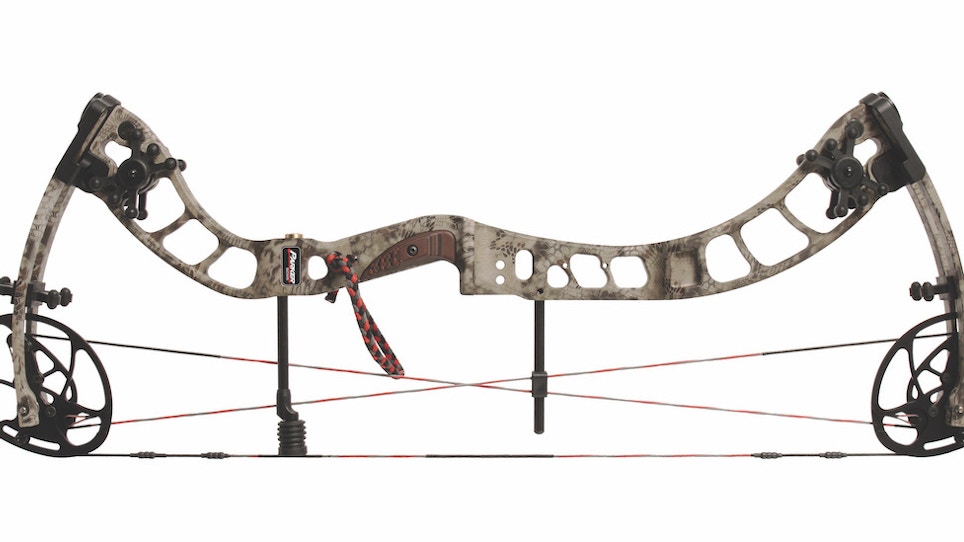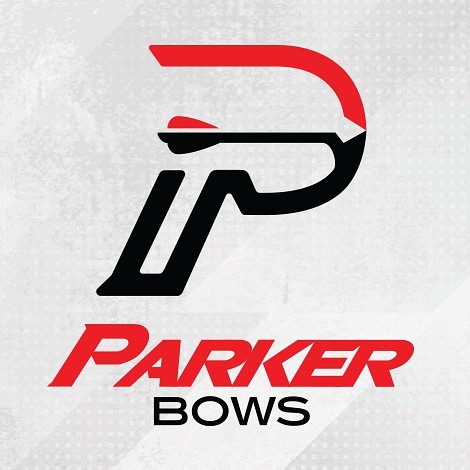 Most bow manufacturers include in their lineup at least one bow that marketers casually refer to as a “price-point” bow — a bow that, while perhaps not offering a lot of bells and whistles or a choice of 11 different camo patterns, does offer reliability and solid performance at an affordable price. Parker has always been all about good value for the money, and the Parker Poison bows, available in a 30- and a 32-inch version, continue that tradition. They’re all made in the U.S.A. and, consistent with their lotta-bang-for-the-buck philosophy, all offer a lifetime warranty covering everything but the strings and cables. (Click here to read Bowhunting World Editor-in-Chief Jace Bauserman’s detailed review of the Parker Poison 32.)
Most bow manufacturers include in their lineup at least one bow that marketers casually refer to as a “price-point” bow — a bow that, while perhaps not offering a lot of bells and whistles or a choice of 11 different camo patterns, does offer reliability and solid performance at an affordable price. Parker has always been all about good value for the money, and the Parker Poison bows, available in a 30- and a 32-inch version, continue that tradition. They’re all made in the U.S.A. and, consistent with their lotta-bang-for-the-buck philosophy, all offer a lifetime warranty covering everything but the strings and cables. (Click here to read Bowhunting World Editor-in-Chief Jace Bauserman’s detailed review of the Parker Poison 32.)
At 330 fps the Poison 30 is respectably fast but clearly not designed to be a speed bow. Instead, Parker touts the Poison 30 for its shootability. In terms of design features, it offers a machined-aluminum riser, parallel split limbs, Parker’s T2 cam system, which are two-track cams to eliminate timing issues, premium Stone Mountain strings, Bowjax dampers on the string and riser, an adjustable string suppressor, speed nocks, limbs stops and an integrated wrist sling. (The Parker 32 offers the same features and overall design, but is 2 inches longer axle to axle, a little heavier and 5 fps slower.
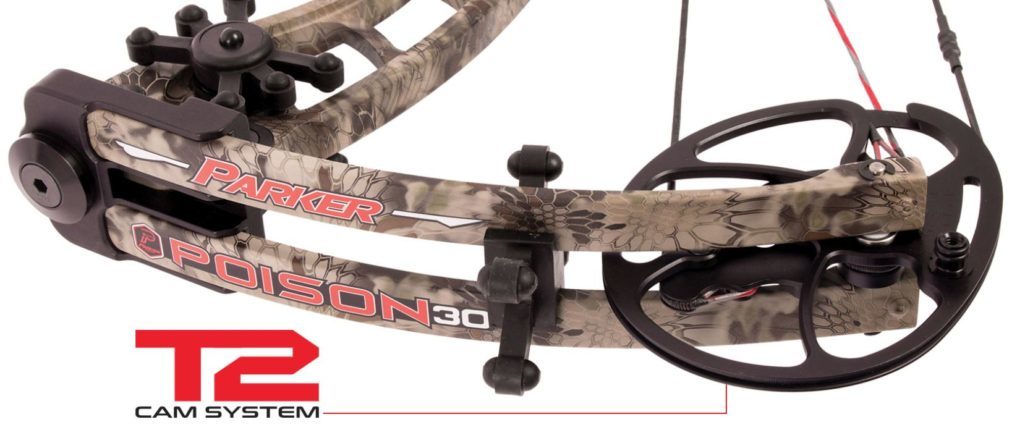 Any bow touted as a “value” bow naturally invites comparison with higher-cost bows that are not so labeled. We’ll get to some of those comparisons in the “Shooting the Parker Poison 30” section. For now, we’ll comment that the cable-guard system is a simple, straightforward design and, at 4.9 pounds, the Poison 30 is definitely on the heavy side. I often feel compelled, when commenting on a bow’s weight, to point out that a heavier bow offers some advantages. All else being equal, it’s going to be quieter with less vibration and will tend to resist torque. Many bowhunters feel that a heavier bow is generally more forgiving and is steadier at full draw. It most certainly will be steadier in a breeze. A very famous bow designer once told me that if he is sitting in a treestand or ground blind, he wants a bow he can barely lift. He was exaggerating, of course, but making the same point: a relatively heavier bow offers some advantages.
Any bow touted as a “value” bow naturally invites comparison with higher-cost bows that are not so labeled. We’ll get to some of those comparisons in the “Shooting the Parker Poison 30” section. For now, we’ll comment that the cable-guard system is a simple, straightforward design and, at 4.9 pounds, the Poison 30 is definitely on the heavy side. I often feel compelled, when commenting on a bow’s weight, to point out that a heavier bow offers some advantages. All else being equal, it’s going to be quieter with less vibration and will tend to resist torque. Many bowhunters feel that a heavier bow is generally more forgiving and is steadier at full draw. It most certainly will be steadier in a breeze. A very famous bow designer once told me that if he is sitting in a treestand or ground blind, he wants a bow he can barely lift. He was exaggerating, of course, but making the same point: a relatively heavier bow offers some advantages.
In terms of appearance, the Parker Poison 30 has a classic compound bow profile. The riser is moderately-to-highly reflexed with no radical cutouts, bridges or widely flared ends. The limbs are parallel, and the cams are large but not oversized. Red and gray strings match the red and gray wrist sling and the red logos on the limbs. From front and back, the riser is a little thicker than most, and that makes for a wider-than-average grip. (More about that later.) The finish is durable and passed the scratch test, and there were no apparent machining marks or other flaws. The Kryptek Highlander finish is slightly muted, but does give this price-point model a bit of flare and a dash of style.
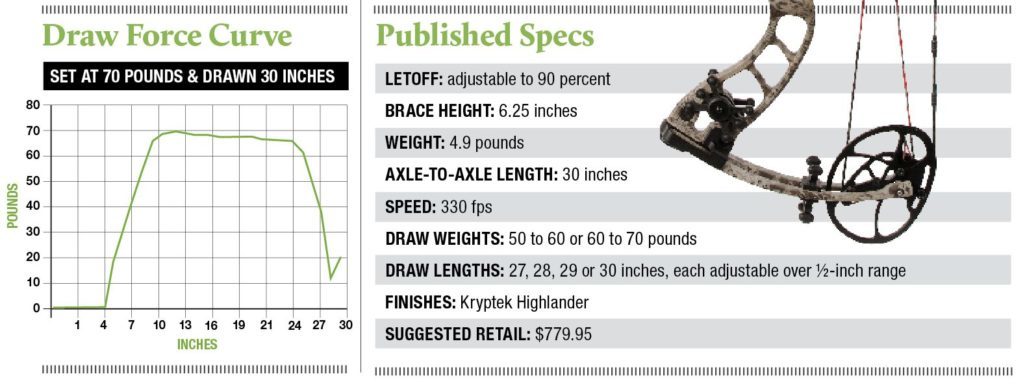
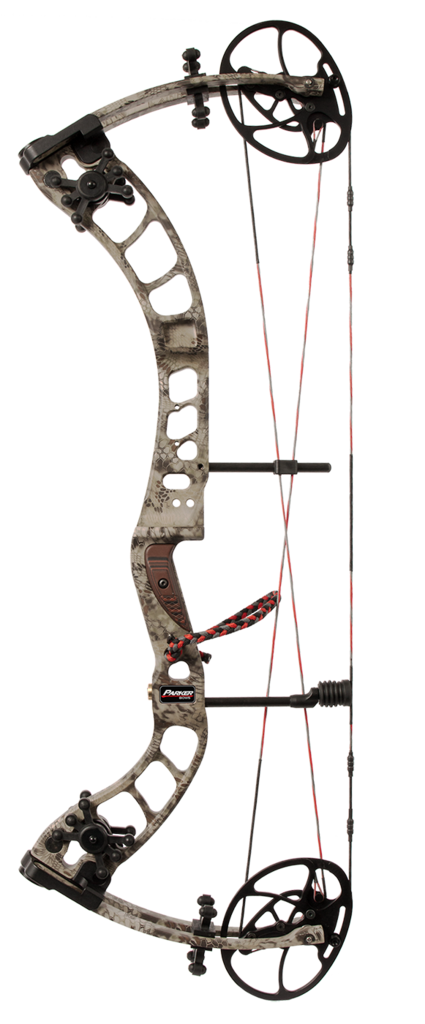 Shooting the Parker Poison 30
Shooting the Parker Poison 30
The test bow arrived maxed out at a little over 70 pounds (which is typically the case), so I backed it down to 70. The limb bolts were stiff and chattered a bit. There are two berger holes for the sight; one seemed overly tight, but I was able to set up the sight with no difficulty using the other. Paper tuning presented no unusual difficulties, and I had the bow tuned and ready to go in a matter of minutes.
The first thing any shooter is going to notice about the bow is its weight, which for some will be a welcomed feel and for others . . . not so much. The second thing will probably be the grip. The riser is wide, and so is the grip. It is a very comfortable grip with nice wooden sideplates and a smooth groove for the thumb. The sideplates can be removed to make the grip somewhat skinnier.
In terms of balance, the Parker Poison 30 is, like most compound bows, somewhat top heavy but not overly so. I had no trouble shooting the bow at distance, and once you get used to the bow's overall weight, it really feels like a rock in the hand.
The draw stroke is very smooth; the limb stops promise a rock-solid back wall, and the high letoff makes the bow very comfortable to hold at full draw for extended periods. The valley is sufficiently deep to ensure no grabbiness from the cams. At the shot, the bow pops forward slightly and is virtually dead in the hand. In terms of noise, the Poison is very quiet.
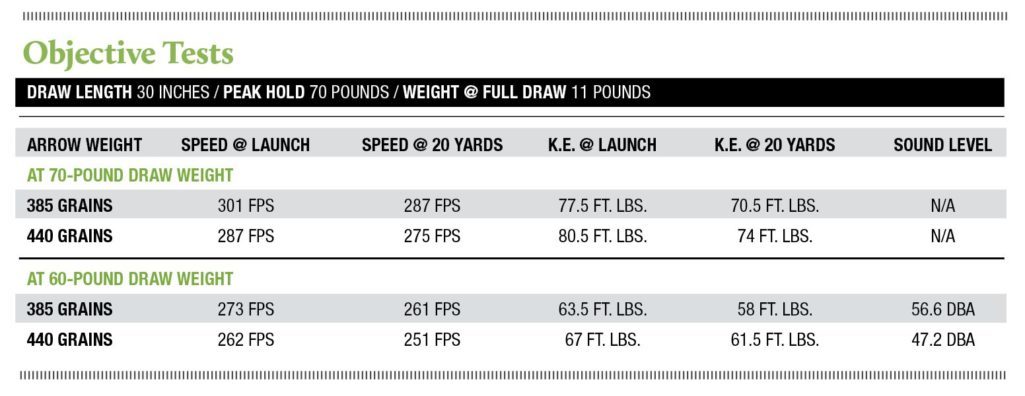
In short, Parker’s claims of a high degree of shootability are justified. It’s a suitable hunting bow for any application, but it’s a very good bow for the deer hunter who primarily hunts from a treestand or a ground blind, who wants to keep his costs well under four digits and who values a quiet, pleasant-shooting bow over blazing speed.
For more information, visit www.parkerbows.com.
How We Test
Each bow is carefully inspected out of the box for fit and finish and for any visible defects in workmanship. Axle-to-axle length, brace height, mass weight and draw length are measured and compared with stated specs. Minor discrepancies in draw length are corrected or noted.
A QAD UltraRest is installed, and each bow is equipped with a TruGlo sight, a TruGlo stabilizer, a G5.25-inch Metapeep and a D-loop. Test arrows are Carbon Express Maxima Red arrows at weights of 385 and 440 grains, fletched with Bohning Blazer vanes and fitted with QAD Tune-A-Nocks. Peak draw weight is established, and draw force curves, along with letoff, are determined using an Easton Bow Force Mapping System.
Using a Spot-Hogg Hooter Shooter bow-shooting machine and a ProChrono chronograph, arrow speed and kinetic energy are measured at point of launch and at 20 yards.
Sound is measured with an NM102 Sound Level Meter with mic positioned 3 feet in front of the bow and 18 inches under the arrow flight path.
All bows are pressed on a Buckeye Archery Solutions Bow-A-Constrictor press.
